A hemorrhoid is a common illness that numerous Americans suffer from. Approximately three out of four adults will have hemorrhoids at some point in their life. If you have anorectal symptoms, such as anal itching, rectal bleeding, anal lumps, and you suspect hemorrhoids , you should always be evaluated with a thorough evaluation by a physician for an accurate diagnosis and treatment plan and to exclude a serious illness.
GREAT NEWS ABOUT HEMORRHOIDS! Infrared coagulation, or IRC, a minimally invasive, non-surgical procedure is available to treat hemorrhoids. This blog is to answer the common questions on the IRC with the FAQs.
What is infra-red coagulation?
Infrared coagulation (IRC) has quickly become the world’s leading office treatment for hemorrhoids and is preferred over other methods because it is fast, well-tolerated, and virtually complication-free. A small probe is placed in the base of the hemorrhoid, and a few bursts of infrared light are applied. The vessels that provide the hemorrhoid with blood are then congealed, and the hemorrhoids shrink away. It may take a few weeks for all the hemorrhoids to shrink completely.
IRC is more effective and fewer infections than sclerotherapy, and may be better tolerated than rubber band ligation in most cases.
How long is the procedure?
Each treatment lasts about a couple of minutes, but the severity of the hemorrhoid as well as your comfort level is considered.
Does it hurt?
The procedure is very tolerable. You’ll probably feel a brief sensation of heat rather than any actual pain. You may feel some discomfort from anoscope. This treatment is available to be done during a regular office visit and does not require any special preparation, anesthesia, or medication or salves.
How should I prepare for the procedure?
In most cases, there is no preparation necessary. The physician will need to examine you to decide on the ideal treatment plan. Try to have a bowel movement 30 minutes before coming into the office.
Who are the Best Candidates for Infrared Coagulation (IRC)?
Infrared coagulation can be used to treat the early stages of hemorrhoids, and it is most effective in grade 1-2 hemorrhoids. If you’re suffering from irritating internal hemorrhoids that continue to cause itching, discomfort, pain, bleeding and other symptoms, and it does not respond to conservative self-management, IRC treatments might be a good solution.
How is Infrared Coagulation Procedure Performed?
Before IRC procedure is performed, Dr. Shu gently inserts the anoscope (a very short, 3-4 inch rigid metal tube), then uses a handheld device that creates an intense beam of infrared light to touch the mucosa above the hemorrhoids, exposing the hemorrhoid tissue to a quick pulse of infrared light. The heat from the infrared light burns 4-5 spots in the targeted area, coagulating the vein above the hemorrhoids.
What is the Recovery Time of Infrared Coagulation Procedure?
After the IRC procedure, you may feel mild discomfort in the anus and the urge to have a bowel movement sometimes. You are able to resume normal everyday activities immediately afterward. Typically, there are no post-treatment effects. However, there may be slight spot bleeding a few days later, but heavy rectal bleeding is extremely rare. Avoid heavy straining, lifting, and aspirin. If you notice significant rectal bleeding, you should call your doctor’s office.
You may use Tylenol as needed and take a warm sitz bath daily to relieve discomfort. A stool softener, fiber, and water will help ease your bowel movement while you heal.
How many visits are required?
This depends on how severe the hemorrhoid problem is, the location of the hemorrhoids, and your individual response to the procedure. Most patients require 4 visits every two weeks.
Will the hemorrhoids come back?
Does it come back?
Recurring hemorrhoids in different locations may occur in some patients. If this happens, infra-red coagulation, rubber band ligation or repeat hemorrhoidectomy may be necessary. Also, a sensible diet, moderate exercise, and proper bowel habits are helpful.
Do you offer other treatment options?
An expert in proctology, Dr. Shu does hundreds of hemorrhoid treatments every year. He offers rubber band ligation and hemorrhoidectomy for the most severe cases if necessary. He also treats other anorectal diseases such as anal fissure, anorectal abscess, anal polyp and anal warts.
Dr. Shu has had extensive experience in treating hemorrhoids with non-surgical IRC treatments in the past two decades, and he has successfully treated more than two thousand hemorrhoids patients with almost ten thousand IRC treatments. Please call 952-922-2151 if you need help to treat your symptomatic hemorrhoids.
 The reality is that there is no one-size-fits-all solution for hemorrhoids or their associated anorectal symptoms. Specialized hemorrhoid clinics should provide multiple treatment modalities featuring state-of-the-art technologies to effectively manage hemorrhoids and related ailments.
The reality is that there is no one-size-fits-all solution for hemorrhoids or their associated anorectal symptoms. Specialized hemorrhoid clinics should provide multiple treatment modalities featuring state-of-the-art technologies to effectively manage hemorrhoids and related ailments. Understanding Anal Tags
Understanding Anal Tags Hemorrhoids are swollen blood vessels in the rectum or anus that can cause pain, itching, bleeding, and discomfort during bowel movements. They can be internal (inside the rectum) or external (outside the anus). Lifestyle factors, constipation, pregnancy, and genetics are common contributors to their development.
Hemorrhoids are swollen blood vessels in the rectum or anus that can cause pain, itching, bleeding, and discomfort during bowel movements. They can be internal (inside the rectum) or external (outside the anus). Lifestyle factors, constipation, pregnancy, and genetics are common contributors to their development.
 As the venous complex of an internal hemorrhoid becomes varicose and continues to enlarge, it bulges into the anal canal and loses its normal anchoring, becoming a prolapsing internal hemorrhoid. The prolapsing hemorrhoid usually returns into the anal canal or rectum on its own, or can be pushed back inside using one’s finger, but usually prolapses again after the next bowel movement. In the anal canal, a hemorrhoid is exposed to movement caused by passing stool, particularly hard stools that can cause bleeding and sting pain. The painless rectal bleeding with bright red blood is a common symptom of internal hemorrhoids. The rectal mucosal lining that has been pulled down secretes mucus and moistens the anus and its surrounding skin, while the stool itself can also leak onto the anal skin. Itchiness often occurs as a result of this dual presence of stool and moisture.
As the venous complex of an internal hemorrhoid becomes varicose and continues to enlarge, it bulges into the anal canal and loses its normal anchoring, becoming a prolapsing internal hemorrhoid. The prolapsing hemorrhoid usually returns into the anal canal or rectum on its own, or can be pushed back inside using one’s finger, but usually prolapses again after the next bowel movement. In the anal canal, a hemorrhoid is exposed to movement caused by passing stool, particularly hard stools that can cause bleeding and sting pain. The painless rectal bleeding with bright red blood is a common symptom of internal hemorrhoids. The rectal mucosal lining that has been pulled down secretes mucus and moistens the anus and its surrounding skin, while the stool itself can also leak onto the anal skin. Itchiness often occurs as a result of this dual presence of stool and moisture. Severe pain is not a common symptom of hemorrhoids, because internal hemorrhoid happens in the area above the dentate line that is supplied by the visceral nerve, like those found within the intestines, which sense pressure rather than pain. Mild aching pain and skin iritating pain in the rectum is common because of local inflammation.
Severe pain is not a common symptom of hemorrhoids, because internal hemorrhoid happens in the area above the dentate line that is supplied by the visceral nerve, like those found within the intestines, which sense pressure rather than pain. Mild aching pain and skin iritating pain in the rectum is common because of local inflammation.  We used to believe that hemorrhoidal bleeding is venous. Now the evidence indicates that hemorrhoidal bleeding is arterial, which is supported by the bright red color and arterial pH of the blood.
We used to believe that hemorrhoidal bleeding is venous. Now the evidence indicates that hemorrhoidal bleeding is arterial, which is supported by the bright red color and arterial pH of the blood.  When you think of medical conditions or illnesses related to Minnesotans, you may assume something along the lines of frostbite, pneumonia, dry skin, or just anything related to the state’s extremely cold winters. However, a study of the most frequently Googled health condition in every US state in the past year revealed that the Land of 10,000 Lakes is most concerned about…
When you think of medical conditions or illnesses related to Minnesotans, you may assume something along the lines of frostbite, pneumonia, dry skin, or just anything related to the state’s extremely cold winters. However, a study of the most frequently Googled health condition in every US state in the past year revealed that the Land of 10,000 Lakes is most concerned about…
 While Botox is often associated with battling wrinkles and fine lines on the face, the medication can actually be used in your…anal region. But not for cosmetic purposes, of course.
While Botox is often associated with battling wrinkles and fine lines on the face, the medication can actually be used in your…anal region. But not for cosmetic purposes, of course. Constipation is one of the most common bowel disorders affecting American adults, with roughly 20 percent of the population suffering from hard, painful stools. Defined as having fewer than three bowel movements per week for several weeks, constipation occurs when the colon absorbs too much water from the food passing through it, creating dry stool that’s extremely difficult to pass.
Constipation is one of the most common bowel disorders affecting American adults, with roughly 20 percent of the population suffering from hard, painful stools. Defined as having fewer than three bowel movements per week for several weeks, constipation occurs when the colon absorbs too much water from the food passing through it, creating dry stool that’s extremely difficult to pass. 3. Exercise more – Being more active is always beneficial to your health! Hitting the gym or simply going for a jog outside helps aid food breakdown and reduce the time it takes food to move through the large intestine. The less time food sits in your colon, the more water it retains to help ease stool passage later.
3. Exercise more – Being more active is always beneficial to your health! Hitting the gym or simply going for a jog outside helps aid food breakdown and reduce the time it takes food to move through the large intestine. The less time food sits in your colon, the more water it retains to help ease stool passage later. Although the exact causes of skin tags are unclear, they usually result from one or more of the following:
Although the exact causes of skin tags are unclear, they usually result from one or more of the following: The average American spends over five hours per day scrolling through Instagram feeds, checking Twitter, answering emails and texts, and watching Netflix—all via smartphone devices and, more often than not, while sitting. Add in the extra layer of using these mobile devices during bathroom trips, and most of us have significantly increased our risk of developing hemorrhoids.
The average American spends over five hours per day scrolling through Instagram feeds, checking Twitter, answering emails and texts, and watching Netflix—all via smartphone devices and, more often than not, while sitting. Add in the extra layer of using these mobile devices during bathroom trips, and most of us have significantly increased our risk of developing hemorrhoids. Your doctor will then insert a light-equipped device called an anoscope into your lower gastrointestinal tract via the anus. An anoscope is a small, hollow, rigid tube roughly 3-5 inches long and 2 inches wide and is usually coated with a jelly-like substance to help ease insertion. While the device is being inserted, your doctor may also ask you to clamp and relax your internal muscles to help with the placement of the anoscope.
Your doctor will then insert a light-equipped device called an anoscope into your lower gastrointestinal tract via the anus. An anoscope is a small, hollow, rigid tube roughly 3-5 inches long and 2 inches wide and is usually coated with a jelly-like substance to help ease insertion. While the device is being inserted, your doctor may also ask you to clamp and relax your internal muscles to help with the placement of the anoscope. Yes, you read that correctly—elephant foot yam is loaded with potential medicinal benefits and may even improve hemorrhoidal symptoms. This alternative medicine has long been used in Ayurveda, a traditional system of medicine rooted in the Indian subcontinent whose practices have recently been globalized. Used to treat numerous conditions such as sperm quality, liver and spleen disorders, and hemorrhages, elephant foot yam just may be the next big home remedy for treating hemorrhoids as well.
Yes, you read that correctly—elephant foot yam is loaded with potential medicinal benefits and may even improve hemorrhoidal symptoms. This alternative medicine has long been used in Ayurveda, a traditional system of medicine rooted in the Indian subcontinent whose practices have recently been globalized. Used to treat numerous conditions such as sperm quality, liver and spleen disorders, and hemorrhages, elephant foot yam just may be the next big home remedy for treating hemorrhoids as well.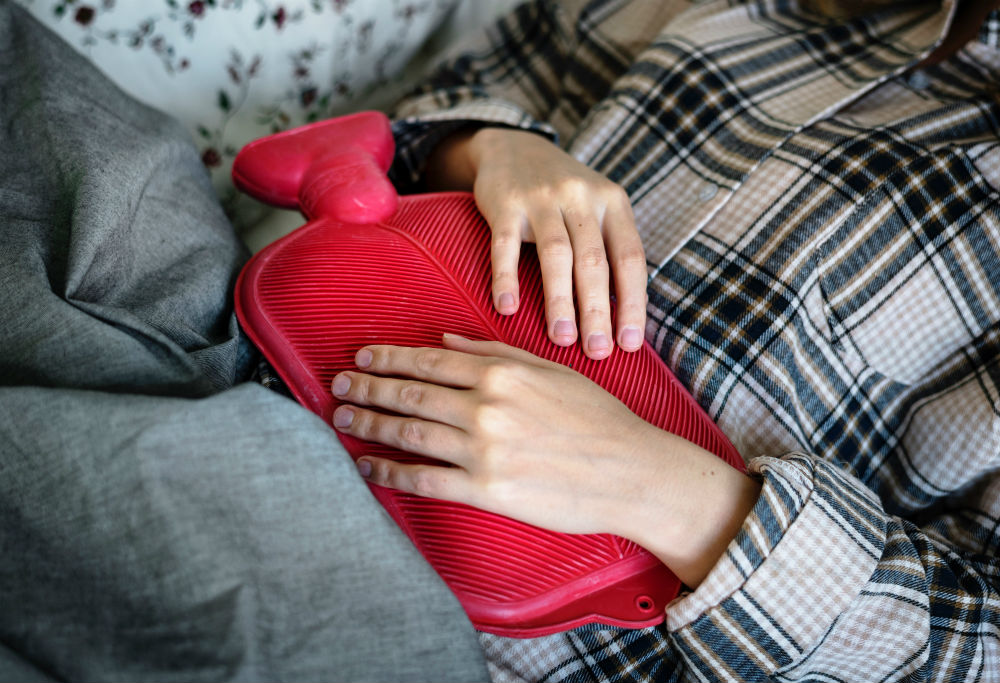 When considering
When considering 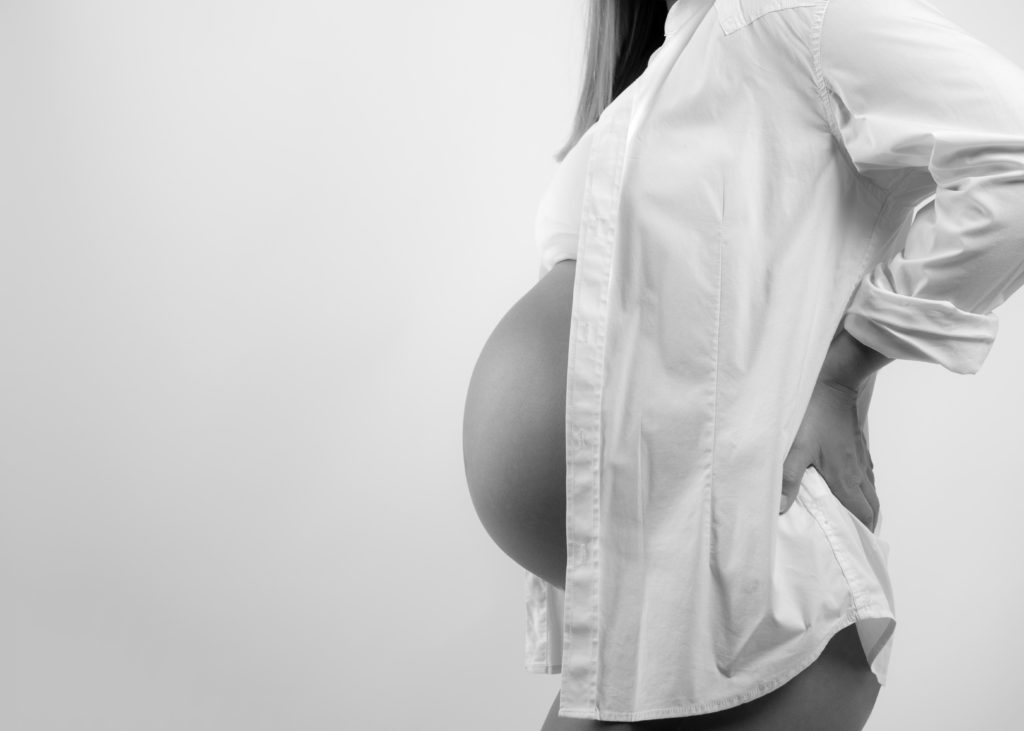
 If you’ve ever experienced an itchy bum in the middle of the night, it’s quite an unpleasant sensation. Scratching the area may provide temporary relief, but the harshness of your nails ends up causing further irritation and damage to the already sensitive anal region.
If you’ve ever experienced an itchy bum in the middle of the night, it’s quite an unpleasant sensation. Scratching the area may provide temporary relief, but the harshness of your nails ends up causing further irritation and damage to the already sensitive anal region.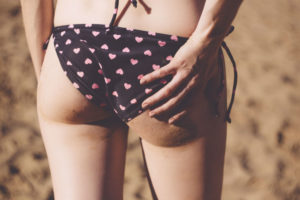 While the term
While the term  Hemorrhoids, abscesses, fistulas, fissures, anal itching, rectal prolapse—with so many anorectal disorders out there, it’s hard to keep track of which is which. Two of these conditions, anal abscesses and anal fistulas, are closely linked to one another but can be easily distinguished via the guidelines below.
Hemorrhoids, abscesses, fistulas, fissures, anal itching, rectal prolapse—with so many anorectal disorders out there, it’s hard to keep track of which is which. Two of these conditions, anal abscesses and anal fistulas, are closely linked to one another but can be easily distinguished via the guidelines below. Bleeding from your rectum or anus is never a pleasant experience, and it can understandably cause immediate panic. Generally, bright red blood indicates bleeding in the lower rectum, while dark red blood indicates bleeding from deeper and further up in the body. While passing dark red blood is usually a sign of digestive bleeding and requires immediate attention,
Bleeding from your rectum or anus is never a pleasant experience, and it can understandably cause immediate panic. Generally, bright red blood indicates bleeding in the lower rectum, while dark red blood indicates bleeding from deeper and further up in the body. While passing dark red blood is usually a sign of digestive bleeding and requires immediate attention,  After rubber band ligation, you’ll typically experience a bit of pain and a feeling of fullness in the lower abdomen, as well as an urge to have a bowel movement. These sensations are totally normal and usually subside within a few days. You may also experience small amounts of anal/rectal bleeding for about 7 days after procedure due to the hemorrhoid falling off. It’s encouraged to avoid physically intense activities that strain the body for at least 2-3 weeks. While some patients are able to return to regular activities immediately, others may need a couple days of downtime and bed rest.
After rubber band ligation, you’ll typically experience a bit of pain and a feeling of fullness in the lower abdomen, as well as an urge to have a bowel movement. These sensations are totally normal and usually subside within a few days. You may also experience small amounts of anal/rectal bleeding for about 7 days after procedure due to the hemorrhoid falling off. It’s encouraged to avoid physically intense activities that strain the body for at least 2-3 weeks. While some patients are able to return to regular activities immediately, others may need a couple days of downtime and bed rest. Hemorrhoids have plagued humans for thousands of years, with the earliest known mention of its symptoms dating back to roughly ~2250 BC in the kingdom of Babylon in the Code of King Hammurabi. Fast forward to 1700 BC in Egypt, and we stumble upon the first-ever recorded case of hemorrhoids, which also happened to highlight an important topical wound ointment.
Hemorrhoids have plagued humans for thousands of years, with the earliest known mention of its symptoms dating back to roughly ~2250 BC in the kingdom of Babylon in the Code of King Hammurabi. Fast forward to 1700 BC in Egypt, and we stumble upon the first-ever recorded case of hemorrhoids, which also happened to highlight an important topical wound ointment. Dealing with hemorrhoid discomfort can be a real pain (literally). In addition to visiting your doctor for a full exam,
Dealing with hemorrhoid discomfort can be a real pain (literally). In addition to visiting your doctor for a full exam,  2. Straining/overexerting yourself during workouts – If a weight is too heavy, DON’T force yourself. Suddenly increasing weight amounts too quickly puts a burst of pressure on your lower region, which is NOT what you want for your blood vessels.
2. Straining/overexerting yourself during workouts – If a weight is too heavy, DON’T force yourself. Suddenly increasing weight amounts too quickly puts a burst of pressure on your lower region, which is NOT what you want for your blood vessels. 5. Sitting for long periods of time – It’s not just excessive toilet-sitting that’s frowned upon. Sitting and binge-watching four straight hours of Keeping Up With the Kardashians will essentially produce the same negative results. Decreased mobility can cause blood flow to also decrease, and blood is more likely to gather up/pool in the anal veins, causing irritation and swelling that can develop into hemorrhoids.
5. Sitting for long periods of time – It’s not just excessive toilet-sitting that’s frowned upon. Sitting and binge-watching four straight hours of Keeping Up With the Kardashians will essentially produce the same negative results. Decreased mobility can cause blood flow to also decrease, and blood is more likely to gather up/pool in the anal veins, causing irritation and swelling that can develop into hemorrhoids.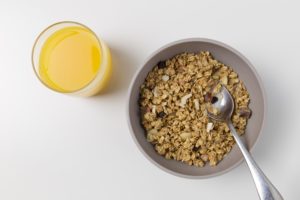

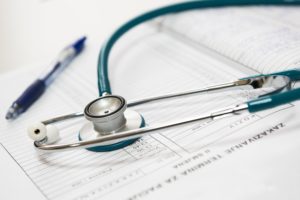 Because the symptoms of hemorrhoids and early-stage rectal/colon cancer are very similar, people often confuse and, at times, misdiagnose the two conditions. Since the treatment method for each condition is vastly different, it’s important to know how to differentiate hemorrhoids from rectal cancer and proceed with the appropriate treatment options.
Because the symptoms of hemorrhoids and early-stage rectal/colon cancer are very similar, people often confuse and, at times, misdiagnose the two conditions. Since the treatment method for each condition is vastly different, it’s important to know how to differentiate hemorrhoids from rectal cancer and proceed with the appropriate treatment options.





 IRC offers major advantages to patients over previous hemorrhoid treatment methods:
IRC offers major advantages to patients over previous hemorrhoid treatment methods: Anoscopy is a simple medical procedure that can help your doctor identify an abnormality in your anus and distal rectum.
Anoscopy is a simple medical procedure that can help your doctor identify an abnormality in your anus and distal rectum. Have you been using too much toilet paper because of pesky anal tags? Hemorrhoidal skin tags are flaps of skin or flesh found around the anus. They often form as a result of an existing hemorrhoid.
Have you been using too much toilet paper because of pesky anal tags? Hemorrhoidal skin tags are flaps of skin or flesh found around the anus. They often form as a result of an existing hemorrhoid. 




